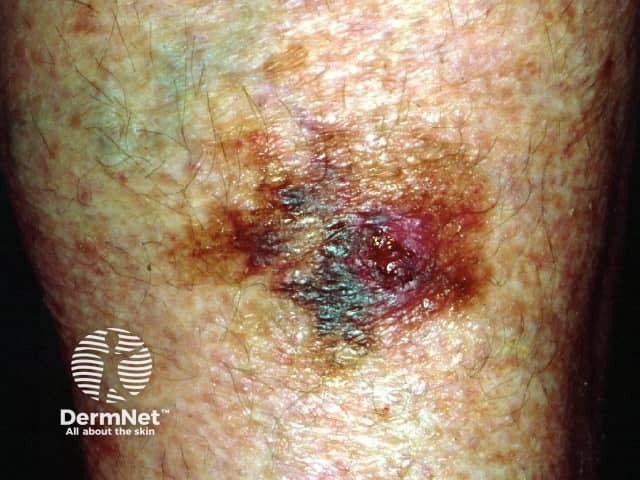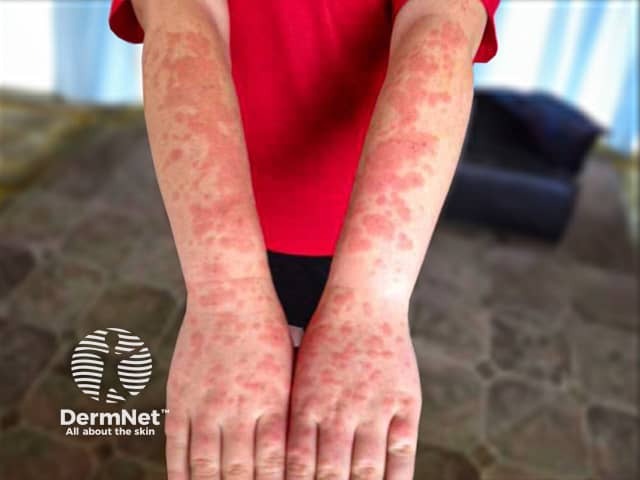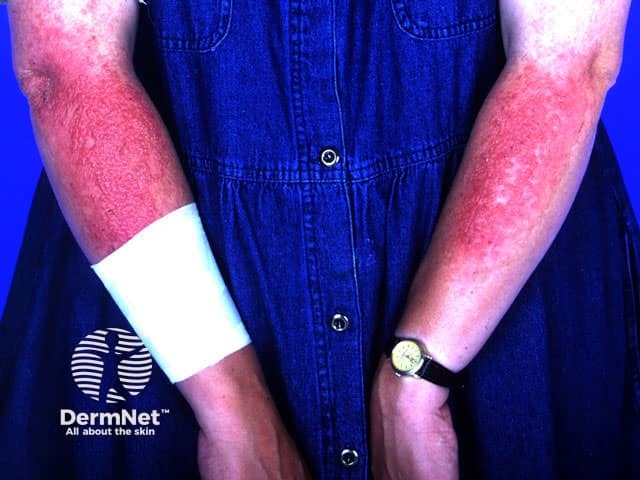Main menu
Common skin conditions

NEWS
Join DermNet PRO
Read more
Quick links
Author: Dr Dhawshini Ravindran, Core Medicine Trainee, Northamptonshire Healthcare, NHS Foundation Trust, Kettering, England. DermNet Editor in Chief: Adjunct A/Prof Amanda Oakley, Dermatologist, Hamilton, New Zealand. Copy-edited by Maria McGivern/Gus Mitchell. January 2018.
This article was supported by an educational grant from La Roche-Posay, distributors of sun protection and skin care products in New Zealand and Australia. Sponsorship does not influence content.
" data-index="1" alt="Go to Introduction
" onclick="event.preventDefault();document.getElementsByTagName('h2')[(1 - 1)].scrollIntoView({behavior: 'smooth',block: 'start'});">Introduction
" data-index="2" alt="Go to Types
" onclick="event.preventDefault();document.getElementsByTagName('h2')[(2 - 1)].scrollIntoView({behavior: 'smooth',block: 'start'});">Types
" data-index="3" alt="Go to Ultraviolet Index
" onclick="event.preventDefault();document.getElementsByTagName('h2')[(3 - 1)].scrollIntoView({behavior: 'smooth',block: 'start'});">Ultraviolet Index
" data-index="4" alt="Go to Factors of greater exposure
" onclick="event.preventDefault();document.getElementsByTagName('h2')[(4 - 1)].scrollIntoView({behavior: 'smooth',block: 'start'});">Factors of greater exposure
" data-index="5" alt="Go to The ozone layer
" onclick="event.preventDefault();document.getElementsByTagName('h2')[(5 - 1)].scrollIntoView({behavior: 'smooth',block: 'start'});">The ozone layer
" data-index="6" alt="Go to The ozone hole and the Montreal Protocol
" onclick="event.preventDefault();document.getElementsByTagName('h2')[(6 - 1)].scrollIntoView({behavior: 'smooth',block: 'start'});">The ozone hole and the Montreal Protocol
" data-index="7" alt="Go to How does ultraviolet radiation affect the skin?
" onclick="event.preventDefault();document.getElementsByTagName('h2')[(7 - 1)].scrollIntoView({behavior: 'smooth',block: 'start'});">How does ultraviolet radiation affect the skin?
" data-index="8" alt="Go to UV radiation and skin cancer
" onclick="event.preventDefault();document.getElementsByTagName('h2')[(8 - 1)].scrollIntoView({behavior: 'smooth',block: 'start'});">UV radiation and skin cancer
" data-index="9" alt="Go to UV radiation and the eyes
" onclick="event.preventDefault();document.getElementsByTagName('h2')[(9 - 1)].scrollIntoView({behavior: 'smooth',block: 'start'});">UV radiation and the eyes
" data-index="10" alt="Go to UV radiation and the immune system
" onclick="event.preventDefault();document.getElementsByTagName('h2')[(10 - 1)].scrollIntoView({behavior: 'smooth',block: 'start'});">UV radiation and the immune system
Beneficial effects
Ultraviolet radiation (UVR) forms part of the electromagnetic spectrum — the energy emitted from the sun. UVR is categorised according to wavelength, which ranges from 100–400 nm.
Artificial sources of UV include tanning booths and mercury vapour lighting; some halogen, fluorescent, and incandescent lights; and some forms of lasers.
The Ultraviolet Index (UVI) is a measure of the strength of UVR causing erythema (sunburn). If the UVI is > 10, the UVR is extreme, and if it is < 3, it is low.
The UVI is higher and UVR is more intense closer to the equator compared to the UVI and UVR at longer latitudes, as the sun is overhead so the distance to reach the Earth is shorter. UVR levels are also greater:
The National Institute of Water and Atmospheric Research (NIWA Taihoro Nukurangi) Lauder ozone measurements taken at Lauder in Central Otago show seasonal and annual climatological variability. Ozone column amounts are measured in Dobson units (DU), where 1 DU = 2.69 x 1016 molecules/cm2.

Ozone is a trace gas that forms the ozone layer within the stratosphere, which is part of the atmosphere around the Earth.
The ‘Montreal Protocol on Substances that Deplete the Ozone Layer’ was signed in 1987. It is an international environmental agreement to protect the ozone layer by reducing the production and usage of ODSs such as CFCs. Since its initiation, the atmospheric levels of ODSs have significantly decreased and the stratospheric ozone is expected to fully recover by the year 2050.
The chronically sun-exposed skin of a bald scalp or face, neck, and hands has unique characteristics compared to skin that has not been exposed to UVR.
UVR is a major carcinogen. It damages the skin by producing reactive oxygen species (free radicals) that damage proteins, lipids, RNA and DNA. According to the two-hit model, where cancer is a result of accumulation mutations to the DNA, the development of skin cancer depends on an individual’s genetic makeup (particularly their MC1R signalling polymorphisms — that determine skin and hair colour and sun sensitivity) plus two factors.
Most BCCs and SCCs in sun-exposed skin carry ‘UVR signature’ mutations (ie, cytosine to tyrosine transitions at cyclobutane pyrimidine dimers) in tumour suppressor genes (PTCH1 and p53 respectively).
Skin cancers are more common in people with inherited photosensitivity disorders. These disorders include:
UVR exposure also increases the risk of:

Superficial spreading melanoma

Squamous cell carcinoma of lip

Basal cell carcinoma
The eyes are partially protected from sunlight by the brow ridges. Before reaching the retina, reflected UVR is filtered by the cornea, melanin in the iris, aqueous humour, and the lens. UVR causes oxidative damage to mitochondrial DNA in the macular part of the neural retina and the retinal pigment epithelium. UVR can also promote inflammatory cytokines and transcription factors within the eye.
Exposure to solar UVR is associated with:
Photons of UVR are absorbed by chromophores (atoms that generate colour on a compound) in the epidermis and dermis, triggering an immune response.
Photosensitive skin conditions arising from the failure of the normal immune response include:

Polymorphic light eruption

Chronic photosensitivity dermatitis

Photocontact dermatitis
UVR suppresses the acquired immune response to microbial infections. It reduces the protective efficacy of vaccinations. UVR related immunosuppression may reactivate some latent infections and convert asymptomatic infections to symptomatic infections. It can also boost the oncogenic properties of microbes, such as human papillomavirus.
The beneficial effects of UVR include: